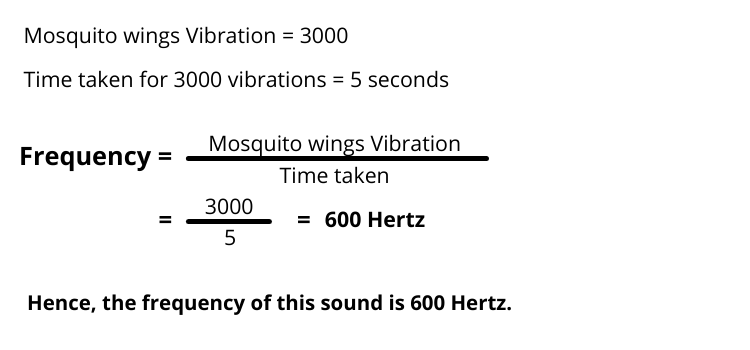The DAV Class 8 Science Chapter 12 Sound Solutions of The Living World Science Book is extremely crucial for the students studying in DAV Class 8. The DAV Solutions for Class 8 Science of Chapter 12 Sound are provided here to help the students to clear all their doubts and to help them in understanding the chapter in an easy and interesting way.
These DAV Class 8 Science Solutions present you with answers to the question on the sounds and vibration, propagation of sound, amplitude, time period and frequency of a vibration, loudness and pitch of a sound, noise and music, noise pollution, sources of noise pollution, effects of noise pollution on health, etc. in details.
While solving the DAV textbook questions, students often face several doubts and eventually get confused. To help the students clear all their doubts instantly, the DAV Class 8 Science Chapter 12 Sound Solutions come as a great resource. Here, the detailed Solutions for Class 8 Science Chapter 12 of DAV Class 8 Science book are given below.
DAV Class 8 Science Chapter 12 Sound Question Answer
DAV Class 8 Science Chapter 12 Sound Question Answer is given below. Here DAV Class 8 Science Chapter 12 Question Answer is provided with great explanation.
Highlights
- Fill in the blanks
- True or False
- Tick the correct option
- Answer the following questions in brief
- Answer the following questions
These DAV Class 8 Science Chapter 12 Sound Solutions will help you in scoring good marks as they cover important concepts in different patterns like fill in the blanks, tick the correct option, True or False, short answer questions, long questions answer and more.
A. Fill in the blanks.
1. Birds have a ring of cartilage, called ___________ in their wind pipes.
2. The SI unit of loudness of sound, is ___________.
3. The pitch of a sound is determined by its ___________.
4. Sounds, of frequency more than 20 kHz, are known as ___________.
5. An irregular, irritating sound is referred to as a ___________.
Answer: (1) syrinx (2) decibel (3) frequency (4) ultrasonic (5) noise.
B. Write True or False for the following statements.
1. Human beings, as well as all animals, have a voice box for producing their characteristic sounds.
2. Of the three mediums, solids, liquids and gases, sound propagates fastest in liquids.
3. Sound cannot propagate through vacuum.
4. Light propagates, through vacuum, with a speed that is nearly a million times more than the speed of sound in air.
5. The frequency of a given sound determines its ‘shrillness’ or ‘flatness”.
6. Irregular non-periodic vibrations generally produce musical sounds.
Answer: (1) True (2) False (3) True (4) True (5) True (6) False
C. Tick the correct option.
1. The maximum displacement of a vibrating body, on either side of its mean position, is known as its-
Answer: amplitude.
2. The frequency of a given sound is 1.5 kHz. The vibrating body is then-
Answer: completing 1,500 vibrations in one second.
3. Sound can propagate through-
Answer: all the three states of matter.
4. When lightning and thunder take place, they occur-
Answer: together but the thunder is observed a little after the lighting.
5. A given sound is inaudible to the human ear. We can then say that this is so-
Answer: because it has any one, or more, of the three characteristics listed above.
6. The following are some statements about sound: (i) Sound propagates faster in steel than in air. (ii) Sounds are produced through vibrations. (iii) Sound propagates faster than light. (iv) Sound does not require a medium for its propagation. Out of these, the correct statements are-
Answer: (i) and (ii) only
D. Answer the following questions in brief.
1. Name the cause that is regarded as the basic cause of all sounds?
Answer: Vibration.
2. Name two musical instruments which produce sound through vibrating strings.
Answer: Guitar and Sitar.
3. Through which state of matter does sound propagate with the-
(a) slowest speed?
Answer: Gas.
(b) fastest speed?
Answer: Solid.
4. Define the following terms. Also, write their SI units.
(a) amplitude
Answer: The maximum displacement of a vibrating body on either side of its central/mean position is called amplitude. Its SI unit is metre.
(b) time period
Answer: The time taken by a vibrating body to complete one vibration. (or time taken for one complete cycle of vibration about a given mean point.) The SI unit of time period is second.
(c) frequency
Answer: the number of cycles of vibrations in one second is called frequency. The SI unit of frequency is hertz (Hz).
5. Name the characteristic of a vibrating body which determines the (a) loudness (b) pitch of the sound produced by it.
Answer: (a) Amplitude is the characteristic of a vibrating body which determines the loudness produced by it.
Answer: (b) Frequency is the characteristic of a vibrating body which determines the pitch of the sound produced by it.
6. The frequencies, of the male and female voices in human beings, are nearly 1 kHz and 1.5 kHz. Which of the two voices-
(a) is likely to be flatter?
Answer: Male.
(b) has a higher pitch?
Answer: Female.
7. When is a given sound regarded as a ‘musical sound’ or ‘music?
Answer: A given sound regarded as a ‘musical sound’ or ‘music if it is produced by regular, or periodic vibrations and make us feel comfortable.
E. Answer the following questions.
1. Explain briefly the mechanism of production of sound in human beings.
Answer: It is the voice box, or the larynx, of the human body system that helps us to produce sound. The voice box has two vocal chords stretched across it. They are stretched across the voice box in such a way that there is a narrow gap, or slit between them. Air can pass through this slit. The lungs force air through the slit between the vocal chords and this make them vibrate and produce sound.
2. How does the mechanism of production of sounds in birds differ from that in human beings?
Answer: The mechanism of production of sounds in birds differ from that in human beings. Birds have a ring of cartilage, called syrinx, in their wind pipe. They use it in their voice box to produce their characteristics sounds. While in human beings have voice box (larynx) to produce sound.
3. Describe a simple experiment to show that sound cannot propagate through vacuum.
Answer: Take a small bell jar having a rubber cork fitted in its neck. Drill a small hole centrally through this rubber core. Suspend a small bell inside the jar with the help of a glass rod. Let the upper end of the rod project out from the hole in the rubber cork and fit this cork firmly in the neck of the bell jar. Close the small opening around the glass rod with an adhesive solution so that the rubber cork closes the jar’s neck in an ‘air tight’ way. Shake the jar so that the bells start vibrating. You will be able to hear the sound of the bell quite clearly.

Now, connect the bell jar to a vacuum pump and start evacuating the air from it. You will no longer hear the sound of the bell when the jar is shaken. You may see the bell vibrating but you do not hear its ringing sound. This is because of the absence of air in the jar. This shows that sound needs a medium for its propagation.
4. On a hot summer day, a little mosquito produces a warning sound near your ear by vibrating its wings at the rate of 3,000 wing beats per five seconds. State the frequency, in hertz, of this sound.
Answer:

5. Explain why we always hear the thunder a little after we see the flash of lightning.
Answer: The speed of light is more than the speed of sound. Due to this, we always hear the thunder a little after we see the flash of lightning.
Explanation:
Measurements, of the speed of light and sound, tell us that light propagates very fast as compared to sound. The speed of sound in air is nearly 330 ms-¹ (or 0.33 km per second) and the speed of light (in vacuum) is as high as (nearly) 3 lakh kilometres per second. Light, thus, propagates nearly a million times faster than the sound. Hence, when lighting and thunder occur together, the flash of lighting reaches us in practically zero time. The sound of the thunder, however, takes a few seconds to reach us. We, therefore, hear the thunder a little later after seeing the flash of light.
6. (a) Define loudness’ and ‘pitch’.
Answer:
Loudness: the ‘sensation, produced in the human ear, which helps to distinguish between the impact of different sounds on the drum of the human ear.
Pitch: a characteristic of sound which helps in differentiating a shrill sound from a flat sound.
(b) State the effect on the-
(i) loudness of a sound when the amplitude of the vibrating body increases.
Answer: The loudness of a sound increases when the amplitude of the vibrating body increases.
(ii) pitch of a sound when the frequency of the vibrating body increases.
Answer: The pitch of a sound increases when the frequency of the vibrating body increases.
7. Why is noise pollution regarded as harmful for human beings?
Answer: Noise pollution is regarded as harmful for human beings due to the following reasons:
The most immediate effect is deterioration of mental health. Continuous noise can create panic. The affected person may become jumpy and her/his frustration level may increase. It may also result in lack of concentration of mind.
Noise pollution also effects human heart. It may also cause: lack of sleep, hypertension, nervousness, anxiety, decrease in ability to memorise and extreme emotional behaviour.
Noise pollution may lead to hearing impairment. On short term basis, noise pollution can cause temporary deafness. If the noise pollution continues over a long period of time, the person may get permanent damage in her/his ears.

Very helpful app thanks solution gyan ????????????????????????????????
Long questions thora chota nahi who ga
Answer of some questions is very long.
But
This app is very helpful
This is not an app fools its a website
Very useful app but it is little different from school answers
thank you.